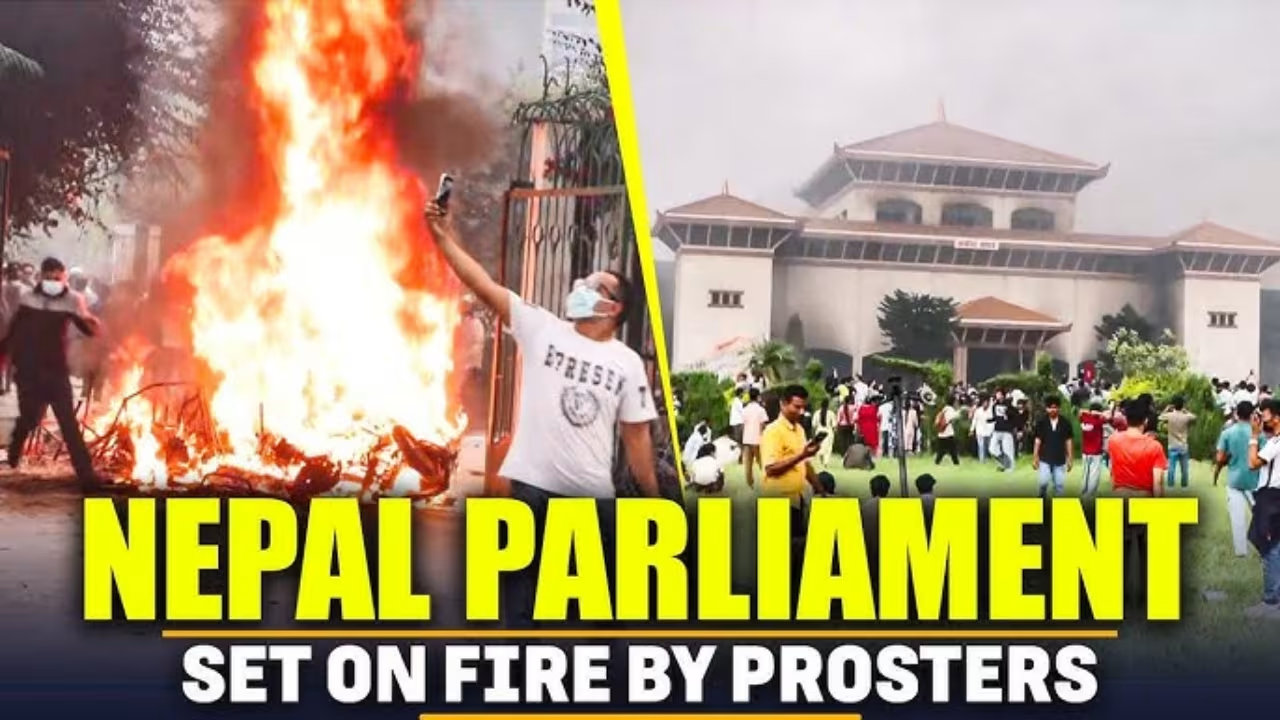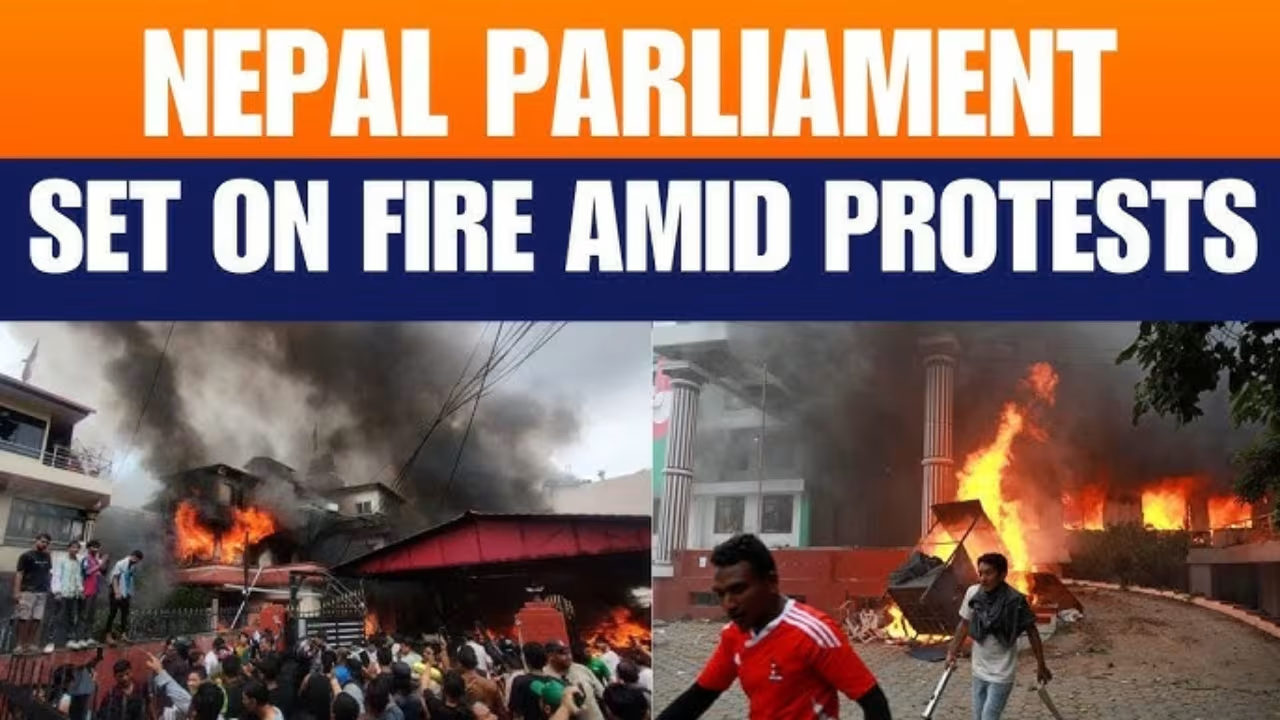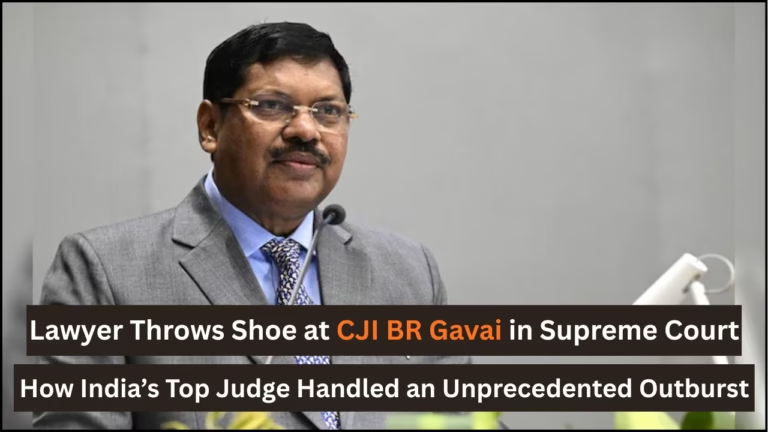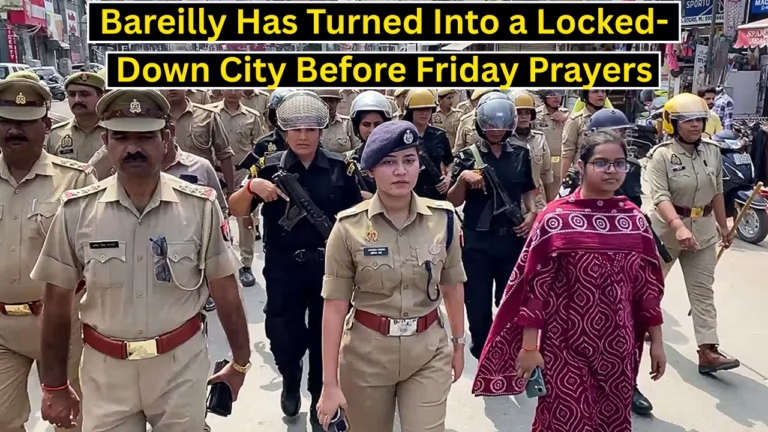
"Kathmandu turns into a flashpoint as Nepal’s Gen Z protests erupt over social media ban and corruption."
Published on: September 10, 2025 at 15:46

Nepal is burning — and it’s not just the parliament building that went up in flames. In the past week, Kathmandu has turned into the epicenter of a massive Gen Z uprising after the government banned 26 popular social media platforms, including Facebook, Instagram, WhatsApp, and YouTube. What began as an online freedom movement has exploded into street protests, clashes with police, and a political earthquake that forced the Prime Minister to resign. With politicians’ homes torched, airports shut down, and global attention fixed on the Himalayan nation, this is more than a local protest — it’s a generational revolt that India cannot ignore.
From a Social Media Crackdown to a National Conflagration
In early September 2025, Nepal’s government enforced a sweeping ban on 26 social media platforms—Facebook, Instagram, WhatsApp, YouTube, X, and more—as they hadn’t registered under its new regulatory law. The move lit the fuse for mass protests among Generation Z, who saw it as censorship and a violation of digital freedoms. What began as a reaction to blocked apps quickly revealed deeper frustrations rooted in corruption, nepotism, and economic neglect—pressing issues for a youth facing unemployment and inequality.
Escalation, Violence, and the Fall of a Government
On September 8, tens of thousands of Gen Z protesters converged on Kathmandu, toppling barricades and storming government complexes. Security forces responded with tear gas, water cannons, rubber bullets, and even live ammunition. At least 19 protesters were killed, over 300 wounded—and the unrest spread nationwide. Chaos reigned: parliament burned, politicians’ homes attacked—including the tragic fate of former PM Jhala Nath Khanal’s wife. The turmoil led Prime Minister K.P. Sharma Oli to resign on September 9 amid escalating anarchy. Kathmandu’s airport shut down, tourists—including many from India—were stranded, and the army deployed to restore order.
Why It Matters for India—And What Comes Next

Nepal’s Gen Z uprising echoes broader South Asian youth protests—from Bangladesh to Sri Lanka—spurred by generational dissatisfaction with governance. Hashtags like #NepoKid and viral TikTok exposure of political elites’ lavish lifestyles fueled public outrage. For India, the lesson is clear: young populations demand accountability, transparency, and respect for digital freedoms. If ignored, suppressed tensions can erupt into instability—even in neighboring countries that appear peaceful. Going forward, Nepal must build trust through reforms—investigating the protesters’ deaths, restoring digital rights, and bridging the disconnect between government and youth.
Also Read: Gaza Faces First-Ever Famine: UN Declares Humanitarian Crisis in the Middle East
Nepal’s Gen Z uprising wasn’t born of a single spark—it was stoked by years of systemic neglect, inequality, and repression of digital expression. This story isn’t just Nepal’s—it’s a cautionary tale for the region. Young people demand respect, space, and agency. If governments—near and far—fail to heed those demands, they risk igniting a conflagration that can’t be contained.
FAQs
1. Why is Nepal’s Gen Z protesting?
Nepal’s Gen Z is protesting against the government’s ban on 26 social media platforms and rising corruption, unemployment, and lack of accountability.
2. What happened during the protests in Kathmandu?
Thousands of youth took to the streets, clashed with police, burned parliament, and forced Prime Minister K.P. Sharma Oli to resign.
3. How many people have died in the Nepal protests?
At least 19 people have been reported killed, and hundreds injured during the violent crackdown.
4. How does this impact India?
The protests highlight regional instability and remind India to engage carefully with Nepal while addressing its own youth’s concerns about jobs and freedoms.
5. Will the social media ban in Nepal be lifted?
Negotiations are ongoing, and protesters are demanding the immediate restoration of platforms and reforms to ensure digital freedom.






